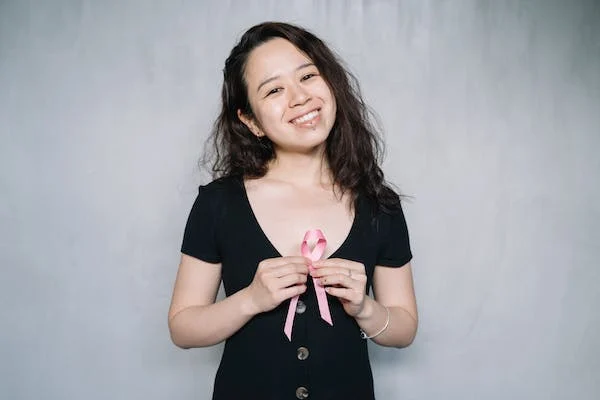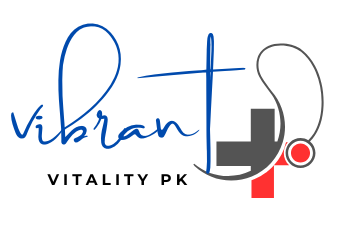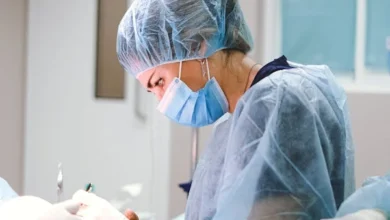Hope While Dealing with Breast Cancer: Coping through 9 Best Nutritious Foods
Breast Cancer

Breast cancer refers to a disease in which abnormal breast cells grow haphazardly and cause tumors. If unaddressed these tumors may spread inside whole body and become extremely deadly.

In 2020, around 2.3 million women affected by breast cancer and resulted in 685000 deaths in 2020 throughout the world. Although, prevalence of breast cancer is primarily occurs in women yet it affect around 0.5 to 1% of men as well. At the end of 2020, there were around 7.8 million affected women with breast cancer.
The incubation and commencement of breast cancer cells initiates from milk ducts. Initially, it’s not that dangerous however if it spread it creates think lumps. The spread out cancer cells (invasive cancer) is more deadly because it may affect lymph nodes of nearby areas as well which is called Metastasis which is extremely detrimental and deadly.
As far as, breast cancer treatment is concerned tit depends upon nature of nature, its despite, stage and immunity of a person. The treatment may include radiations, medications and surgery if required.
Who are at more risk?
It is revealed that around 0.5 to 1 % men affected by breast cancer and the mode of treatment is also the same for men as well. But the prevalence is more in women.
As far as, the risk factors are concerned they are aging, obesity, alcohol and tobacco use, radiation exposure and family history. It is observed that breast cancer can affect any women more than 40 years of age and having family history. However, having no family history is not exclusion.
It is also revealed through studies that gene mutations in genes BRCA1, BRCA2 and PALB2 also cause breast cancers. The women affected by such issues may have to remove breasts surgically.
What are signs and symptoms?
Although, the sign symptoms may differ yet there are some common symptoms or certain combination of symptoms. The major symptoms are as under:
- A painless breast lump or thickness
- Changes in breast i.e. in shape, size and appearances
- Skin changes like redness
- Nipple appearance changes
- Discharge of bloody fluid from nipples.
It is worth mentioning that the women who may have lumps even painless, they must consult the doctor immediately. It is also pertinent to note that not all lumps cause cancers rather they can be treated if not spread in nearby areas.
The most common identifiable spread is from the lymph nodes under the arm. If adequately spread, cancer may harm other organs as well like lungs, brain and bones. If cancer spread throughout the body it causes headache and pain in bones.
What is the treatment of breast cancer?
The treatment of breast cancer depends upon the spread of the disease to the other organs or affected lymph nodes. However, there are some treatments which commonly employed by the doctors to avoid recurrence. The treatments are:
- Surgical intervention for tumor removal
- Radiation therapy to curtail further spread
- Medications
- Chemotherapy
- Hormonal therapy
The treatment of breast cancer requires will, patience and immunity of the patient as well. It is more beneficial if started in time and complete.
As far as, the surgical interventions are concerned, the lumpectomy (removal of cancerous cells only) or mastectomy (removal of whole breast) can be taken pace depending upon the need or the nature of spread.
The sole purpose of radiation therapy is to remove the remainder cancer cells to avoid further spread and damage. The medications depend upon the biological properties of the cancerous cells which may be revealed through specific tests like tumor marker determination tests. World Health Organization (WHO) also notified the Essential Medicines List for treatment purposes.
What is the World Health Organizations (WHO) initiative?
WHO emphasize upon 3 fundamental pillars to curb the spread of breast cancer. The 3 main pillars are:
- Ensure early detection of problem through value added health promotion
- In time diagnosis
- A thorough breast cancer management practice.
WHO through its Global Breast Cancer Initiative (GBCI) aims to reduce breast cancer mortality to 2.5% annually from 2020 to 2040. It means to reduce around 2.5 million cases of cancer deaths which may avert around 25% cases till 2030 and about 40% cases till 2040. The coverage of women will be up to 70 years of age.
The goal of public awareness and social responsibility has far lasting benefits. The basic knowledge about breast cancer, its signs and symptoms, understanding about family history and health seeking behavior promotion in case of any suspected conditions. Such high levels of social awareness on breast cancer is vital for survival because not everybody can afford its treatment and mammographic screenings are still absent in most of the countries.
What is role of nutrition in breast cancer care and recovery?
Healthy lifestyle and proper nutrition no doubt is really beneficial for overall wellbeing but up till now there are not research proven remedies of breast cancer through nutritional supplements or diet. But, the nutrition may lower down the risk of recurrence and may also help in improving immunity and physical health to fight against the disease.
The recommended dietary plan tips for the patients of breast cancer may be as follows:
- Reducing fats to 10-20% of calories required. It’s more beneficial to use low fat foods.
- Emphasize on intake of plant based proteins rather than animal base proteins. For example to use beans and avoid eating turkey and meat
- One must add whole grains, fruits, beans, soy and cruciferous vegetables daily to enrich diet with required calories and endurance.
- Always carry water bottle with themselves and drink around 8-10 glasses of water at least.
- Limit caffeine rather use herbal tea
- Avoid alcohol
- Avoid food additives and artificial flavors.
What are supportive foods against breast cancer?
One thing needs to ponder that better and healthy diet can only improve overall health and wellbeing but one must follow the doctor advice as well like screenings and mammograms etc.
Improvement in mind may facilitate in lowering down the risk of breast cancer and other ailments because of improved health and immunity. But you may consider it only one piece of puzzle only. Nutrition rich foods no doubt play a vital role in maintaining higher standards of health and wellbeing.
However, according to available body of researches the following foods enrich the diet with nutrition and minerals and lower the risk of breast cancer.
Vegetables
All vegetables are healthy and nutritious but certain vegetables have anticancer properties which are spinach, chard, kale, arugula and mustard. Leafy green vegetables are rich source of carotenoid antioxidants like lutein, zeaxanthin and beta carotene. Higher levels of these antioxidants reduce the risk of breast cancer.
A study conducted in 2012, on 7011 women revealed that the women are high in carotenoid levels are less prone to develop breast cancers than other women.
Another study on 32,826 women in 2015 revealed that carotenoid levels in women between 18-28 percent are less affected by breast cancers. Secondly, the presence of folate in vegetables also protect against breast cancers.
Likewise, cruciferous vegetables like cabbage, broccoli and cauliflower also helpful in reducing the risk of breast cancer due to the presence of compounds like glucosinolate which has anticancer properties.
Furthermore, allium vegetables like onion, garlic and leeks also helpful because of presence of compounds known as organosulfer, vitamin C and flavonoid antioxidants. They have strong anticancer elements.
Citrus Fruits
All fruits are beneficial but citrus fruits are more beneficial and healthy due to presence of vitamin C, folate, beta carotene, cryptoxanthin and antioxidants like hesperetin, naringenin and quercetin.
Citrus fruits have certain anticancer and anti inflammatory properties. A study conducted in 2013 on 8393 people revealed that citrus fruits lower down risk of breast cancer up to 10%.
Citrus fruits may include oranges, grapefruits, limes, lemon and tangerines.
Berries
Due to presence of antioxidants like flavonoids and anthocyanins, berries daily intake may protect against breast cancers and other cancers.
An analysis of an older research study on 75,929 women concluded that increased intake of berries especially blueberries helps in reducing the risk of breast cancer.
Apples, grapes, pear and peaches
Apples, pears, peaches and grapes are found more protective and beneficial against breast cancers due to presence of flavonoids and anthocyanins.
A study conducted in 2013 revealed that weekly 2 servings of peaches may reduces the risk of breast cancer up to 41%.
Fish
Fishes like salmon, mackerels and sardines are found more significantly beneficial. Researches posit that the selenium, omega 3 fatty acids and antioxidants protect against cancer up to 14% as suggested by a study conducted in 2013.
Beans
A research study on 4706 women concluded that the higher consumption of beans may lower the breast cancer risk up to 20% owing to essential vitamins, minerals and fibers beans possess.
Herbs and Spices
The presence of fatty acids, polyphenol and vitamins make the spices and herbs more healthy and beneficial. The compounds like oregano, curcumin in turmeric and apigenin in parsley all are extremely powerful compounds which have anticancer properties.
Therefore, it is recommended to add herbs and spices in your daily diet like inclusion of curt spice mix, ginger and thyme.
Whole Grain
The whole grains may include quinoa; rye, brown rice; barley and wheat are really significant nutrients sources which may possess vitamin, minerals, fibers and antioxidants.
The studies conducted in 2016 and also later studies on 10812 concluded that the significant consumption of whole grains may protect against breast cancer up to 12 years.
Walnuts
Walnuts contain alpha linolenic acids which are very healthy and also heart friendly as well. A study shows that weekly 2-3 servings of almonds, peanuts and walnuts reduce the chances of breast cancer. A study in 2016 suggested that walnuts lower the risk of breast cancer up to 63%.
Conclusion
Breast cancer is really disturbing and painful nightmare for women especially. It’s more common in women than men but there is probability of developing breast cancer among men also.
It is suggested to every woman to self examine themselves frequently and in case of emerging any breast lump even if they are painless must consult doctor immediately and seek guidance. However, if someone confronts breast cancer than proper, nutritious and balanced diet is inevitable because while dealing and fighting against it one must have strong immunity and will power.
Finally, it is important to avoid unhealthy diet, saturated and unsaturated fats and excessive sugars. Furthermore, alcohol and tobacco use must be avoided and keep the diet simple, nutritious and healthy for better endurance and overall wellbeing.
FAQs
What is breast cancer?
Breast cancer refers to a disease in which abnormal breast cells grow haphazardly and cause tumors.
Is there any treatment of breast cancer?
Yes but if identified in time and spread not taken place. If spread is less than the treatment is more effective.
When should one visit doctor?
In case of any pain in breast, any breast lump or liquid discharge.







Thanks for sharing such important information 👍🏻